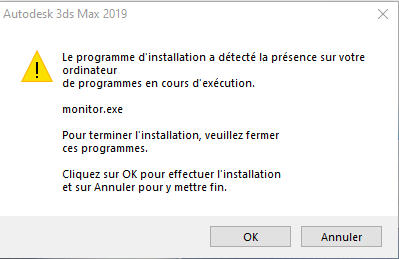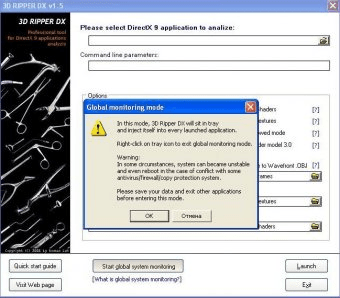


MONITOR.EXE 3D MAX WINDOWS
The Display Cross Hair Cursor option changes the cursor from the Windows default arrow to a crosshair cursor similar to the one used in AutoCAD.įor some actions, such as non-uniform scaling, Max displays a warning dialog box asking whether you are sure of the action. If this option is disabled, you need to play the previews with the Animation View Preview menu command. The AutoPlay Preview File setting automatically plays Preview Files in the default media player when they are finished rendering. Tooltips are helpful when you're first learning the Max interface, but they quickly become annoying and you'll want to turn them off. The Enable Viewport Tooltips option can toggle tooltips on or off. The options in the UI Display section control additional aspects of the interface. Enable this setting only if you plan on using any models created using Max R4 or earlier. The newer method is more accurate but may affect smoothing groups. The Use Legacy R4 Vertex Normals option computes vertex normals based on the Max version 4 instead of the newer method. This is used only if you've made the Command Panel wider or floating. The Rollout Threshold value sets how many pixels can be scrolled before the rollup shifts to another column. The Wrap Cursor Near Spinner option keeps the cursor close to the spinner when you change values by dragging with the mouse, so you can drag the mouse continuously without worrying about hitting the top or bottom of the screen. You can also change the values in the spinner by clicking the spinner and dragging up to increase the value or down to decrease it. Right-click on a spinner to automatically set its value to 0 or its lowest threshold. You can also enable the snap mode using the Spinner Snap button on the main toolbar. The Use Spinner Snap option enables the snap mode. The Preference Settings dialog box includes settings for changing the number of decimals displayed in spinners and the increment or decrement value for clicking an arrow. Spinners are interface controls that enable you to enter values or interactively increase or decrease the value by clicking the arrows on the right. Spinner, Rollout, and Vertex Normal settings If you find yourself changing the brush size every time you use this tool, then you can alter its default size with this setting. In the default interface, this size is set to 20. The Paint Selection Brush Size value sets the default size of the Paint Selection Brush. I use the Crossing selection method and find that I don't always start my selection from the same side. I like to keep the Auto Window/Crossing by Direction option disabled.

If you select the first option, then the Crossing method is used when the mouse is dragged from right to left and the Window method is used when the mouse is dragged from left to right. The Auto Window/Crossing by Direction option lets you select scene objects using the windowing method (the entire object must be within the selected windowed area to be selected) and the crossing method (which selects objects if their borders are crossed with the mouse) at the same time, depending on the direction that the mouse is dragged. This applies the Multi/Sub-Object material to the object with the dropped material corresponding with the subobject selection's Material ID. The Automatic Sub-Material Assignment option, when checked, enables materials to be dragged and dropped directly onto a subobject selection. This saves valuable memory and still makes the plug-ins accessible. The Load Plug-Ins When Used option keeps plug-ins out of memory until they are accessed. Loading Plug-Ins and Sub-Material settings If disabled, each transform uses the coordinate system last selected. The Reference Coordinate System setting makes all transform tools use the same coordinate system and transform center when the Constant option is enabled. A smaller number frees up memory, but does not let you backtrack through your work. The Scene Undo spinner sets the number of commands that can be kept in a buffer for undoing. Undo Levels and the Reference Coordinate System The quickest way I've found to open the Preference Settings dialog box is to right-click the Spinner Snap Toggle button. The General panel includes many global settings that affect the entire interface.įigure 5.17: The General panel lets you change many UI settings. The first panel in the Preference Settings dialog box is for General settings, as shown in Figure 5.17. The dialog box includes eleven panels: General, Files, Viewports, Gamma and LUT, Rendering, Animation, Inverse Kinematics, Gizmos, MAXScript, Radiosity, and mental ray. You open it by choosing Customize Preferences. The Preference Settings dialog box lets you configure Max so it works in a way that is most comfortable for you.


 0 kommentar(er)
0 kommentar(er)
